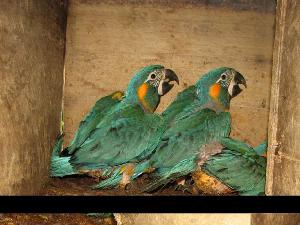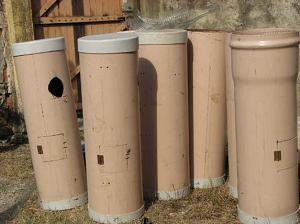Igor Berkunsky
Other projects
10 Sep 2009
Blue-Throated Macaw Conservation Project: Increasing the Availability of Nest Sites II
27 Sep 2010
Blue-Throated Macaw Conservation Project: Movements, Habitat Use and Population Size
In order to develop management actions oriented to increase BTM-population size, we will provide artificial nest and we will evaluated their occupation and nesting success.

Blue-Throated Macaw.
The Blue-throated Macaw is an endemic species of the savannas of Beni, and it is estimated that only 120 individuals remain in Bolivia. Actually, pet trade is decreasing, and habitat is available. However, Blue-throated Macaw density is low and is not assuring the viability of the population. One of main causes limiting the Blue-throated macaw reproduction is the low number of natural cavities for nesting. The savannas hold small patches of forest that are dominated by palm and hardwood trees that offer cavities. However, the competition for cavities with other birds, including other macaw’s species, is strong, making difficult the access of Blue-throated Macaw to them.

Nest boxes.
The project combines research and conservation objectives. The conservation of Blue-throated Macaw populations will be successful only if the factors limiting their populations become in reduce. We identified lack of cavities as one of main causes limiting Blue-throated Macaw reproduction. We observed several pairs searching for cavities without success. We also have provided artificial nest, and Blue-throated Macaw accepted them. If we increase the number of artificial nests before the reproductive season, we will assure that more pairs of BTM will have access to these nests. Our artificial nests are designed to impede the access of several predators, and to avoid the flooding. If Blue-throated Macaw pairs use artificial nest, we would increase the probabilities of nesting success. This work will develop a concrete action to promote the viability of this critically endangered species.
